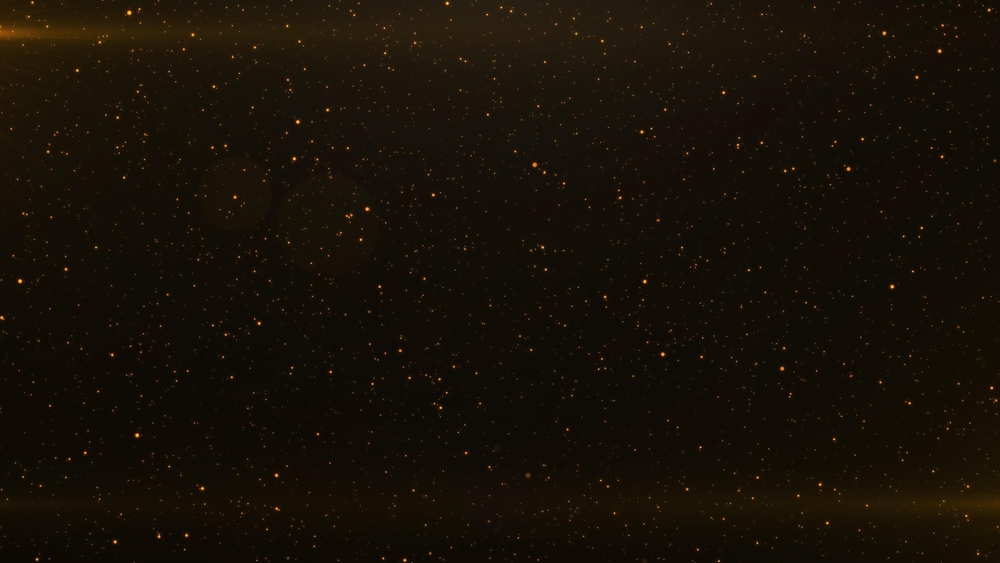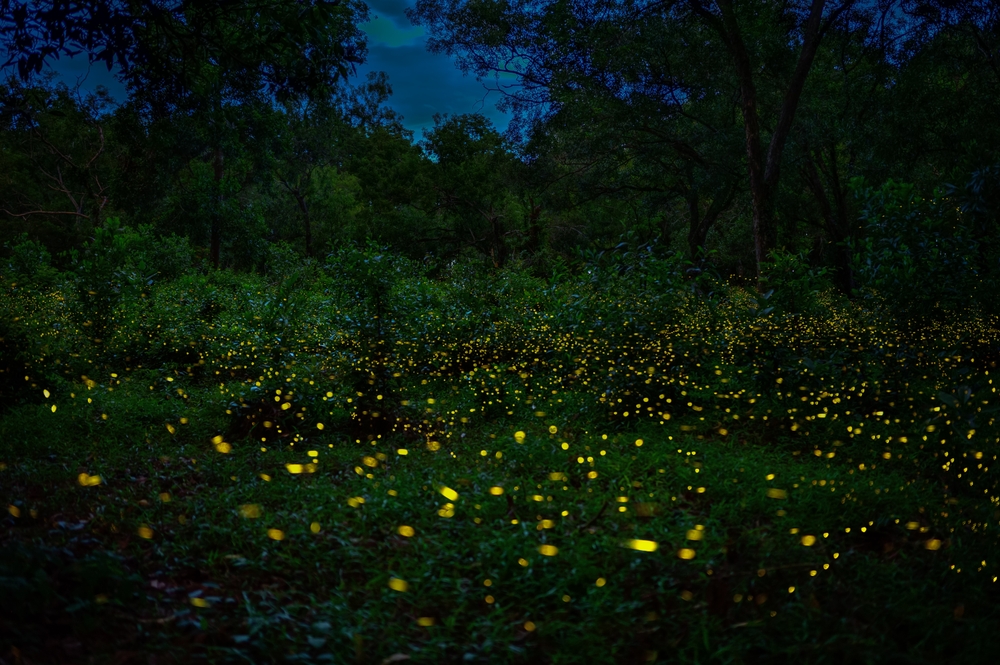Your cart is currently empty!
Swarms Of Fireflies Are Lighting Up Illinois Again-And Scientists Say There Is Hope

On warm summer nights in Illinois, a soft, intermittent glow is appearing once again across parks, neighborhoods, and open fields. For many, it is a familiar signal of the season — the return of fireflies. Their numbers in the region appear stronger this year, marking a welcome change after seasons in which their presence seemed to dwindle. This resurgence has caught the attention of both residents and scientists, prompting questions about what has changed and how sustainable this revival might be.
The firefly’s gentle light holds a unique place in our memories and culture. For some, it recalls childhood evenings spent chasing their slow, glowing arcs through tall grass, mason jars in hand, waiting for that moment when the darkness would come alive with green pulses. For others, it represents a natural wonder worth preserving, a living reminder that even small details in the environment can carry meaning. But behind this year’s brighter display lies a complex interplay of weather patterns, habitat conditions, and human influence that shapes whether these insects thrive or decline.
This is not simply a feel-good story about a species returning in greater numbers. It is also about the science that explains their fluctuations, the challenges they continue to face, and the role people can play in ensuring that future summers still carry this same quiet magic.

Why Illinois Is Seeing More Fireflies This Year
Across Illinois, observers are noting a greater abundance of fireflies compared to recent summers, and scientists have been quick to connect this rise to a rare combination of favorable environmental conditions. Illinois State Entomologist Christopher Dietrich reports that a mild winter spared many larvae from the harsh freezes that can sharply reduce survival rates. This was followed by a wet spring that left soil moist but not overly saturated, an ideal balance for supporting the slugs, snails, and worms that firefly larvae feed on. According to Allen Lawrence of the Peggy Notebaert Nature Museum, the availability of these food sources directly determines how many larvae will make it to adulthood.
The most common species in the state, the eastern firefly (Photinus pyralis), is especially visible this summer, recognized by its distinctive “big dipper” flight pattern in which it dips and rises in a gentle J-shape. Its light serves a dual purpose: signaling to potential mates while also warning predators of its chemical defenses. Lawrence notes that while the higher numbers this year are encouraging, such seasonal increases do not necessarily indicate a permanent population recovery. Fireflies, like many insects, experience natural fluctuations in abundance, and a good year can easily be followed by a sharp decline if conditions shift.
For residents, these changes are deeply personal. In neighborhoods like Chicago’s Avondale, locals have taken to online forums to share stories of seeing more fireflies than they have in decades. Some recall summers in the 1990s when their backyards seemed to flicker endlessly, followed by years when the lights all but disappeared. The current revival has stirred feelings of nostalgia and a renewed awareness that such moments in nature are not guaranteed.

A Species Under Pressure
Despite the heartening scenes across Illinois this summer, experts caution that fireflies remain under considerable environmental pressure. Climate change continues to disrupt the predictable seasonal patterns their life cycle depends on, bringing warmer winters, erratic rainfall, and more frequent extreme weather events. Richard Joyce of the Xerces Society’s Firefly Atlas project points out that species tied to specific habitats, such as wetlands, face a particular risk when those habitats are drained, developed, or fragmented. Without adequate monitoring data for many species, it is difficult to determine which are stable and which may be in serious decline, a knowledge gap that complicates conservation planning.
The health of firefly populations is closely linked to the condition of the soil where they live for most of their life cycle as larvae. They require ground that stays moist without being flooded; too much water can drown eggs and larvae, while too little can lead to food shortages and poor survival rates. Because this underground stage can last for two or more years, the impact of today’s weather patterns may not be seen until future summers. This time lag makes it harder to connect cause and effect, and it underscores the importance of keeping habitats consistently suitable year after year.
Beyond climate and habitat, human activities introduce additional threats. Pesticides and herbicides not only harm fireflies directly but also eliminate the soft-bodied prey that larvae depend on. Light pollution poses another significant challenge by disrupting the flashes fireflies use to find mates, reducing their chances of reproducing successfully. Even in a year like this one, when conditions align in their favor, these pressures remain a constant presence in the background.

What Research Is Revealing
Studying fireflies is an ongoing effort that combines scientific fieldwork with community participation. With more than 179 known species in the United States, each with distinct flashing patterns and habitat needs, researchers cannot rely solely on traditional surveys to capture a full picture of their status. Projects such as the Firefly Atlas invite members of the public to log sightings, including the number seen, location, and habitat conditions. This citizen science approach significantly expands the reach of data collection, especially in regions that lack formal monitoring programs.
In Illinois, the 26 recorded species show varying degrees of resilience to environmental changes. Most are not currently classified as endangered, but the cypress firefly has been listed as vulnerable, and several others are categorized as “data deficient” on the International Union for Conservation of Nature’s Red List, meaning there is too little information to assess their risk. This lack of clarity makes long-term observation crucial, as short-lived population increases may mask underlying declines.
Weather patterns emerge repeatedly as a major driver of abundance. When mild winters are followed by springs with sufficient rainfall, fireflies generally appear in greater numbers. However, climate models for the Midwest predict more frequent and intense swings between wet and dry conditions. Understanding how each species responds to these changes will help conservationists anticipate which are most likely to struggle and where intervention will have the greatest impact.

Steps Toward Conservation
Protecting fireflies does not require large-scale programs; many effective actions can be taken in backyards and local communities. Reducing the use of pesticides and herbicides immediately improves survival odds for both fireflies and the insects they feed on. Turning off unnecessary outdoor lighting during the summer months helps preserve the darkness they need for their mating signals to work. Leaving areas of natural vegetation, tall grass, and leaf litter in place provides vital overwintering sites for larvae and their prey.
Local engagement can help these practices spread. Nature centers, botanical gardens, and conservation groups often host summer events that highlight fireflies, allowing residents to observe them while learning about the ecological factors that sustain them. Such experiences are particularly powerful for children, who may form lasting memories and a lifelong interest in protecting the natural world from these encounters.
Participation in citizen science initiatives adds another layer of support. By contributing observations to projects like Firefly Watch, individuals can provide valuable information on where fireflies are thriving, where they are absent, and how conditions may be changing over time. These contributions feed into larger datasets that inform research, habitat management, and conservation policy.

Keeping the Glow Alive
The return of fireflies in Illinois this year is a welcome sight, but it also serves as a reminder of the delicate balance that sustains such beauty. Their gentle light may be small in scale, yet it carries a depth of meaning. Linking us to the cycles of the seasons, the landscapes we inhabit, and the shared responsibility of safeguarding the biodiversity around us. The presence of fireflies is not accidental; it is the result of environmental conditions, human choices, and the interconnectedness of natural systems.
Whether or not future generations will stand in the dusk and watch these tiny lanterns rise from the grass depends largely on the decisions we make today. Land use, habitat preservation, and environmental stewardship all influence the outcome. Individual actions, though they may seem modest, can create ripple effects when practiced collectively, helping to secure the conditions fireflies need to survive.
In many ways, the persistence of their glow reflects our willingness to value and protect the quieter wonders of the world. By choosing to act, to preserve darkness where it’s needed, to nurture habitats, and to reduce harm. We make it possible for these lights to return, again and again, as a steady reminder that even the smallest lives can illuminate the night.
